| |
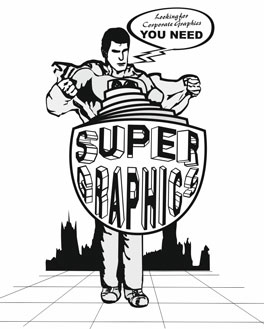
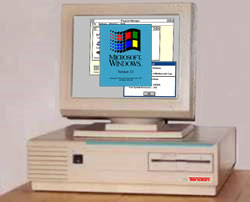
1988 Tandon 286 computer Window 3 £1200
1989 CorelDraw V1 £499
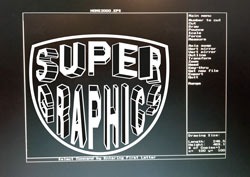
1988 CADlink V1 DOS V3 £599
Roland Camm 1 £5,999
1993 Thermozone Card £750
1990 Rapid Relay Cable Network
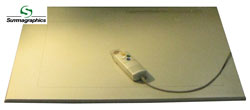
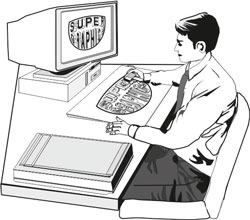
New kit required 1992
Upgrade to 3Com BNC network card x3 £325
EMS expanded memory card £600
4MB ram £400
Taxan Monitor £2300
Cannon Scanner £ 1100
Victor 386 Computer £2100
|
Borrowing his fathers Amstrad 512 computer Gareth created the Supergraphics logo in 1988 using a DOS 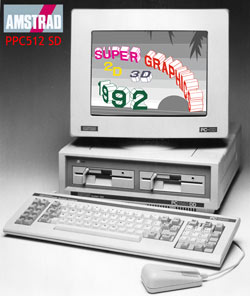 program called Energraphix accessed from a Dos menu programmed by his father which also had the Apple like GEM interface which Amstrad sadly dropped due to the continued developement of Windows. program called Energraphix accessed from a Dos menu programmed by his father which also had the Apple like GEM interface which Amstrad sadly dropped due to the continued developement of Windows.
His fathers first computer was a Tandy III TRS-DOS Version 2. The CPU was a well-respected 8-bit Zilog Z-80, capable of running at spec 4MHz clock speed.
PC Revolution In 1988, the IBM-compatible PC revolution provided EnerGraphiX Engineering (still called Energraphics) an IBM PC-XT compatible, based on the Intel 8088 microprocessor. The PC was upgraded with a 20MB hard disk and a 8 bit EMS memory expansion card. With the advent of graphical user interfaces (GUIs) it required upgrading the processing power of the PC so a completely new motherboard was installed, making it no longer an XT, but a 386SX 25MHz PC, running the then brand new Windows 3.0 GUI. At that time, it was cutting edge multi-tasking PC architecture.
 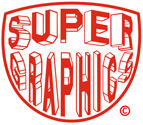
In the summer of 1989 Gareth was informed that the STA (Skills Training Agency) was to close due to government cuts so would probably have to go back on the tools after rejecting an instructor position in the Graphic & Sign Shop at HM Prison Coldingley so returned his fathers Amstrad to purchase from him a Tandon 286 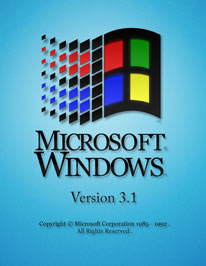 computer for £1200 (around £3500 today) realizing the potential of the new digital technology. Gareth having no savings borrowed the money from his wife Allyson who had just been made redundant but would pay Allyson back a year later when he received his redundancy money computer for £1200 (around £3500 today) realizing the potential of the new digital technology. Gareth having no savings borrowed the money from his wife Allyson who had just been made redundant but would pay Allyson back a year later when he received his redundancy money
The Tandon had a much more powerful than the Amstrad, now using VGA graphics instead of EGA with the new storage technology quantum hard card the forerunner of the hard disk today when combined with the new Windows 3 operating system and Corel Draw V1 creating complex graphics was possible but still using DOS code for vinyl cutting (still used today) combined with a program called CADlink authored by a Canadian Company based in Ontario.
Gareth and Allyson could have used their redundancy money to reduce their mortgage starting at £30,000 in 1985 quickly rising to £75,000 by 1991 but instead invested 50% in a new vinyl cutting system he had used in the early 80's with the remaining 50% to build an A series turbo engine and The Italian Job Minis costing nearly £8,000 so sounds cheap today.
After rejecting the transfer for a continuing nine to five civil service post at Her Majesty's pleasure with a living wage and good pension, In the Autumn of 1990 Supergraphics was born at the start of another recession with yearly mortgage interest payments of over £6,000 and an income of less than £8,000 per annum combined with Interest rates which varied between 8 to 15% you might be thinking was madness. (how very true today)
It is never about the money but about what he loves doing. Back in the day it was old school brushes and spraying but today you might call him a digital artist who very occasionally gets the odd sign writing job with occasional display work to keep his hand in and the odd painting or graphic sold on the web.
|
|